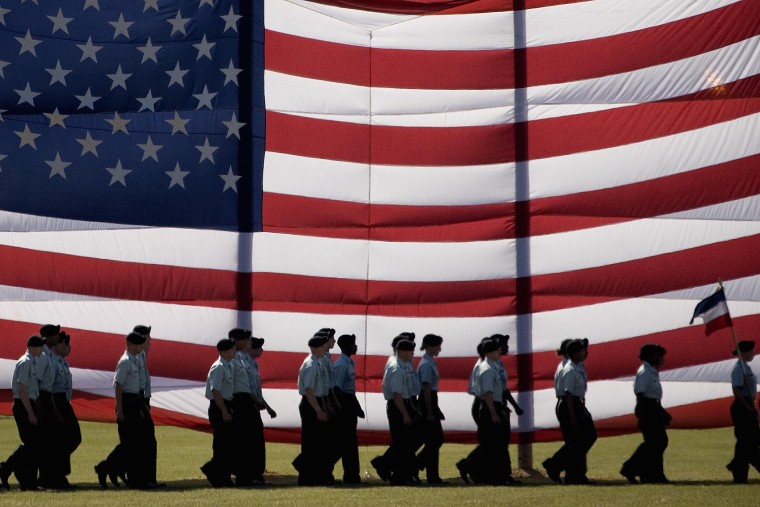Ever since the racially motivated shooting massacre in Charleston last week that took nine lives, calls have grown stronger to remove symbols of the Confederacy from U.S. government property.
South Carolina’s Governor Nikki Haley on Monday called for the state’s legislature to take down the Confederate flag from their Capitol grounds. Alabama Governor Robert Bentley then ordered the flag removed from their state Capitol the next day.
But there’s one often overlooked place where confederate symbolism can be seen—U.S. Army bases. And it appears it may stay that way. MSNBC.com reached out to the Army to ask whether bases named after Confederate generals who fought against the U.S. should be renamed.
"Every Army installation is named for a soldier who holds a place in our military history. Accordingly, these historic names represent individuals, not causes or ideologies,” said U.S. Army Chief of Public Affairs, Brig. General Malcom B. Frost in an exclusive statement to msnbc.com. “It should be noted that the naming occurred in the spirit of reconciliation, not division."
Of the 18 Army bases across the country named after Civil War generals, eight of them are named after Confederates. They have combined populations of over 600,000, including active-duty soldiers, reservists, family members, contractors and civilian workers.
Naming bases after confederates is not just a cultural issue, it’s actually the official policy of the U.S government.
According to the Army’s website:
“Although naming forts and camps after distinguished military veterans from both the U.S. and Confederate Armies had become a common practice, it was not the official policy until the publication of a War Department memorandum dated 20 November 1939. This memorandum stated that ‘The War Department has enunciated a policy of naming military reservations in honor of deceased distinguished officers regardless of the arm or service in which they have served.’"
The largest base in Virginia is Fort Lee, the Army’s Quartermaster headquarters. It’s named after Confederate General Robert E. Lee, who led the main army for the Confederacy—the very army that made the Confederate battle flag famous. In the “Battle of Antietam”, Lee’s army killed over 10,000 U.S. soldiers, in one day. It’s still the bloodiest one day battle in American history.
Lee’s senior Corps commander was General A.P. Hill, who also has a base named for him. During the “Battle of the Crater” in Petersburg, Virginia, in July 1864, units under Hill’s III Corps killed nearly 4,000 U.S. soldiers on the battlefield, many of them after they surrendered, either because they were African-American or fought against them.
Hill then paraded the remaining POW’s through the streets of Petersburg. Author Richard Slotkin described the horrific scene in his book “No Quarter”:
[U.S. soldiers] were given no food for more than 24 hours, and no water until nightfall…Blacks and Whites [soldiers] were mustered together and arranged in a column of fours…Behind [Union General William Bartlett] came alternating groups of Black soldiers (wounded and unwounded), barefoot and stripped down to their shirts and drawers…Like a circus parade they were marched down and around all the streets of the town for two hours or more, ‘taunted by all the women, stoned by the boys, and cursed by the men.’
So if naming some Army bases after these Generals was part of a reconciliation for generations long past, then wouldn’t renaming them be reconciliation for today’s?
